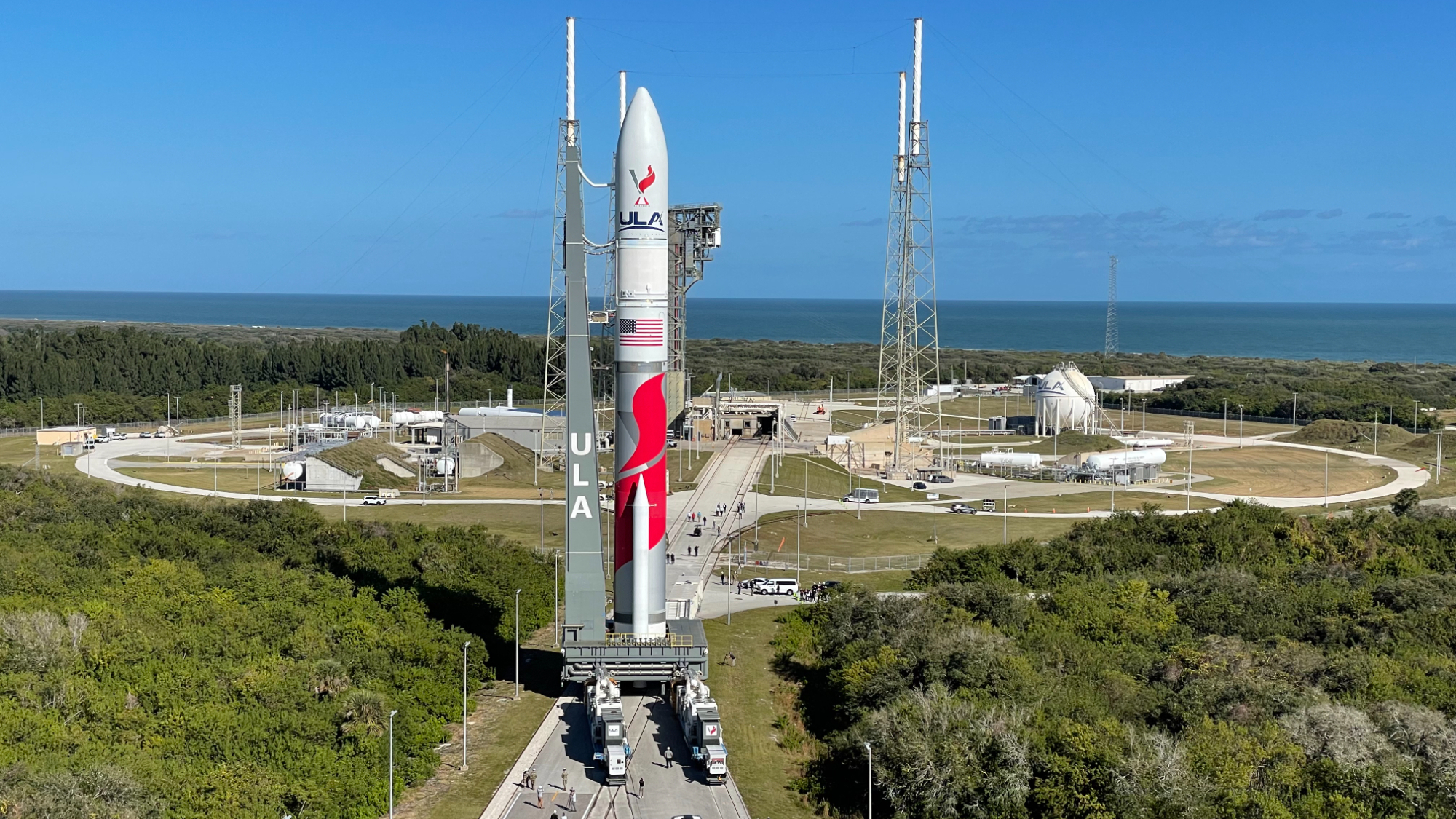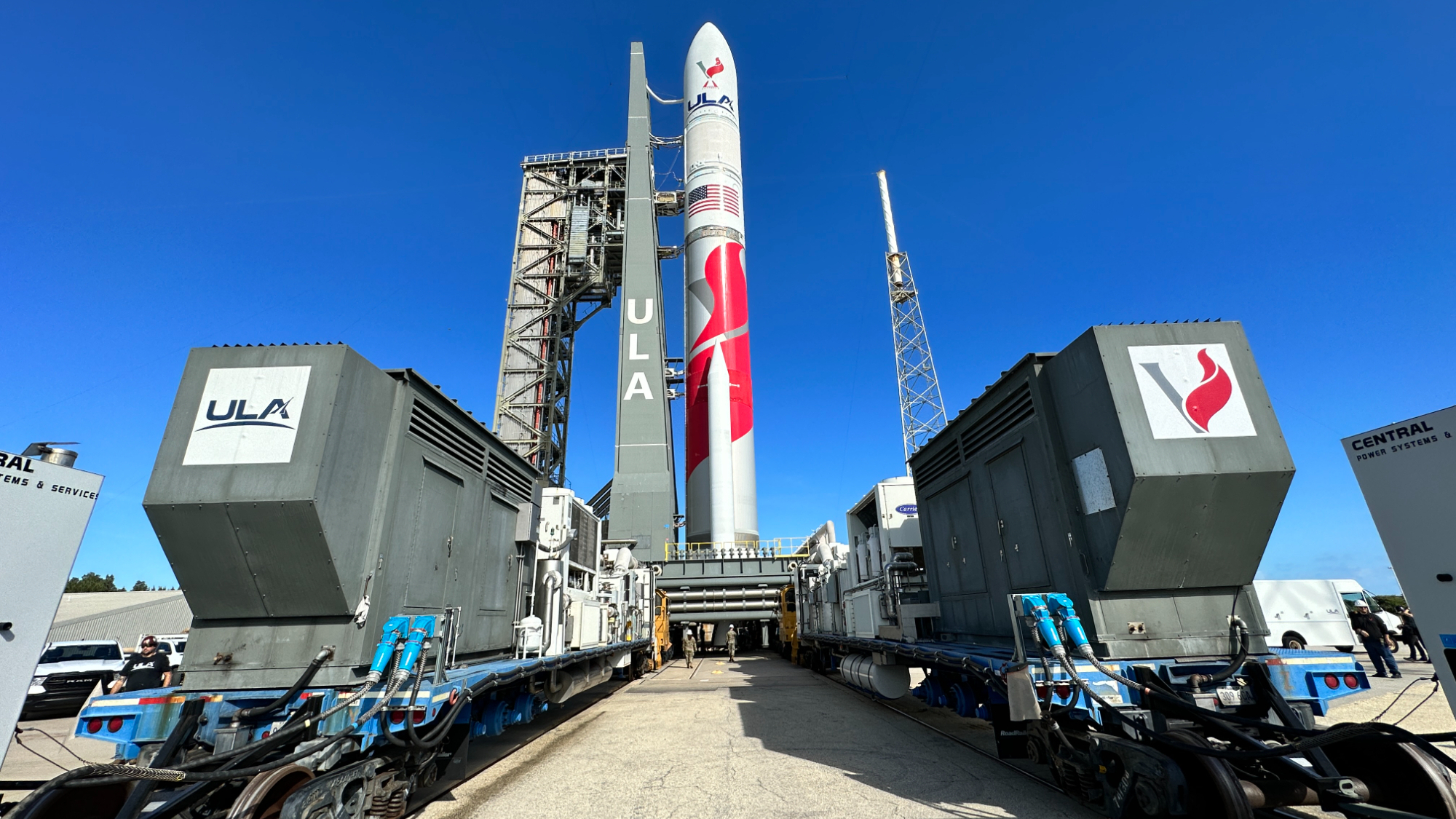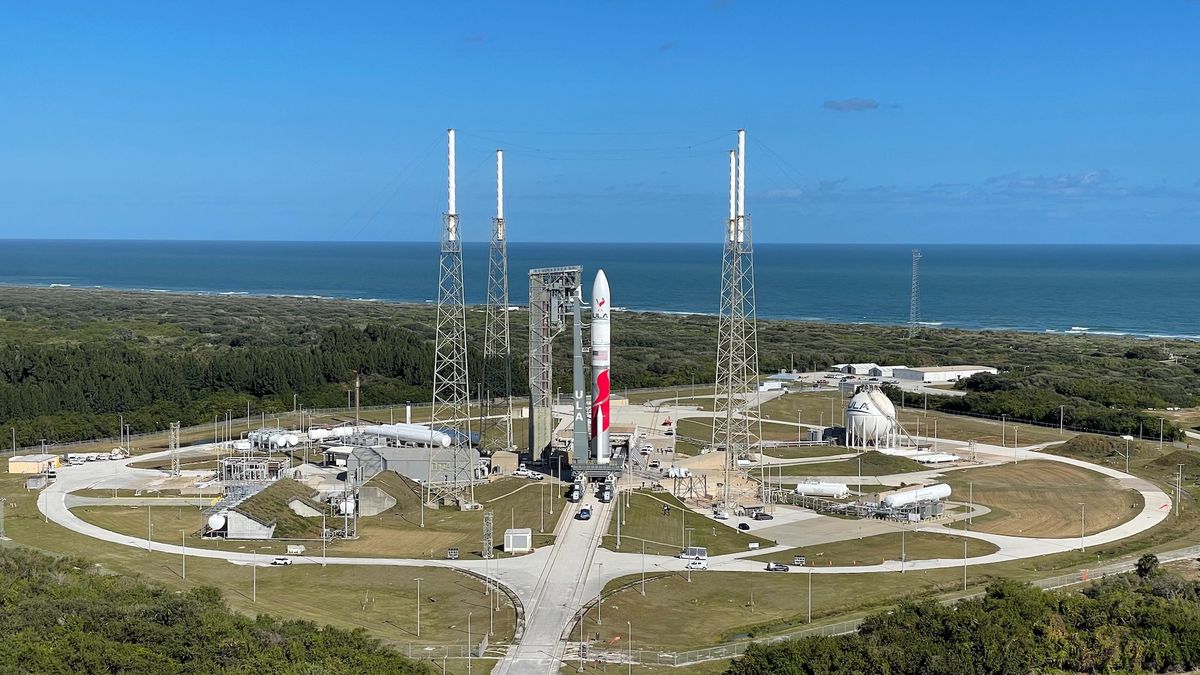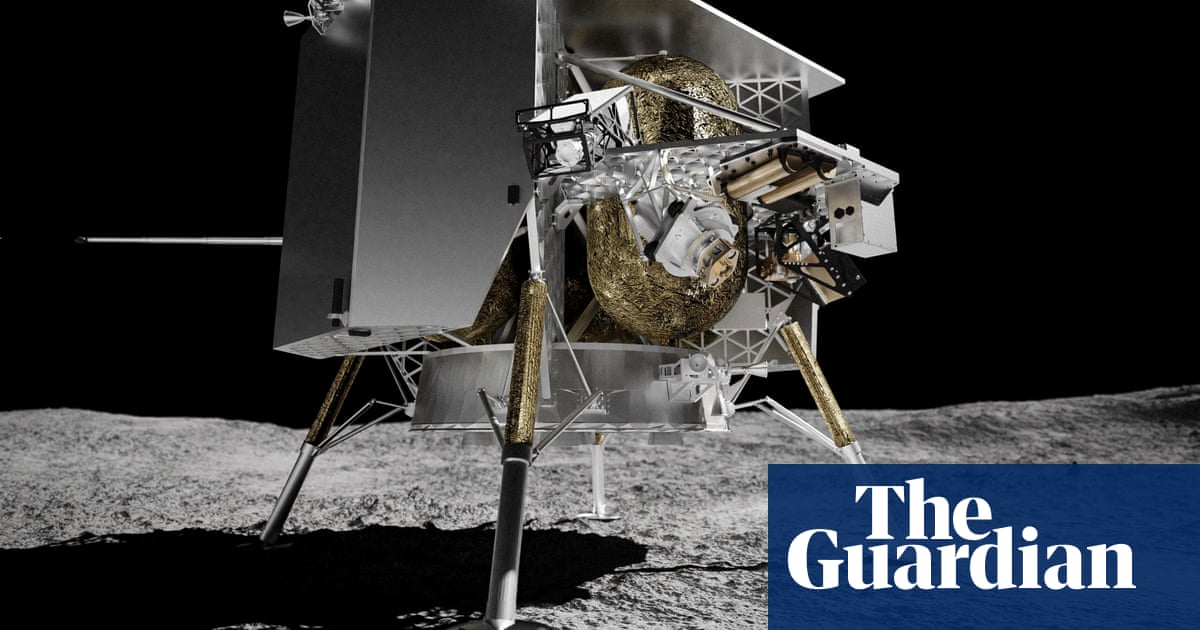The United States is set to attempt a moon landing for the first time in over five decades, with two private companies hustling to get the country back into space. Astrobotic Technology and Houston's Intuitive Machines are both planning lunar landings, with Astrobotic targeting a touchdown at 80 degrees south latitude next month and Intuitive Machines aiming for a landing in mid-February. The Japanese Space Agency has already launched its own moon lander and is sharing an X-ray telescope that stayed behind in orbit around Earth, while China has landed three times on the moon's far side over the past decade. India also attempted to land near the south polar region last year but crashed, as did an Israeli nonprofit in 2019. The United States has not attempted a moon landing since Apollo 17 in December 1972.
Two Private Companies Plan to Attempt Moon Landings in the US for First Time Since Apollo 17
Astrobotic targets a touchdown at 80 degrees south latitude next month while Intuitive Machines aims for a landing in mid-February.
The United States is set to attempt a moon landing for the first time in over five decades.
Two private companies, Astrobotic Technology and Houston's Intuitive Machines, are planning lunar landings.




Confidence
100%
No Doubts Found At Time Of Publication
Sources
61%
First US moon lander since Apollo prepares to blast off on Monday
theguardian.com Article URL: https://www.theguardian.com/world/2024/feb/13/ pakistan-·coalition-·agrees-to-form-government Ian Sample Friday, 05 January 2024 12:18Unique Points
- Peregrine mission one is a commercial operation to put a US lander on the moon.
- The Vulcan rocket Peregrine sits on has never flown before, though its manufacturer United Launch Alliance has had a 100% mission success rate with its predecessor rockets.
- Peregrine carries five Nasa payloads and 15 others. One of the payloads is a shoebox-sized rover from Carnegie Mellon University set to become the first US robot to take a spin on the moon.
- The mission is considered risky as no private company has ever achieved a soft landing on the moon or any other celestial body.
- Peregrine will measure radiation levels, surface and subsurface water ice, magnetic field, and extremely tenuous layer of gas called exosphere. The readings are expected to help minimise risks and harness the moon's natural resources when humans return to its surface.
Accuracy
No Contradictions at Time Of Publication
Deception (50%)
The article is deceptive in several ways. Firstly, it states that Peregrine mission one will roar into the sky at 7.18am UK time Monday and then head to the moon after looping around the planet. However, this statement is incorrect as Peregrine mission one has already launched on February 23rd and not on March 5th as stated in the article.- The launch date of Peregrine mission one was incorrectly stated in the article.
Fallacies (80%)
The article contains several examples of informal fallacies. The author uses an appeal to authority by stating that the mission is considered risky because Nasa has instruments aboard the robotic lander but does not provide any evidence for this claim. Additionally, the author uses inflammatory rhetoric when describing some payloads as divisive and potentially desecrational without providing any context or evidence for these claims.- The mission is considered risky because Nasa has instruments aboard the robotic lander.
Bias (85%)
The article contains examples of religious bias and monetary bias. The author uses the phrase 'commercial operation' to describe Peregrine mission one which implies that it is being funded by private companies rather than Nasa. This could be seen as an example of monetary bias as it suggests that money plays a significant role in space exploration.- The article mentions the commercial nature of Peregrine mission one, suggesting that money plays a significant role in space exploration.
Site Conflicts Of Interest (0%)
There are multiple examples of conflicts of interest in this article. The author has a financial stake in the company that is developing the Peregrine rocket and commercial lunar payload services (CLPS) initiative.- The Peregrine mission one launch time UK time Monday, February 23rd.
Author Conflicts Of Interest (0%)
The author Ian Sample has multiple conflicts of interest on the topics provided. He mentions NASA's commercial lunar payload services (CLPS) initiative and private company achievements in space exploration which could be seen as a financial tie to these companies. Additionally, he mentions Elysium Space and Celestis cremated human remains and DNA which raises questions about personal relationships or affiliations with these organizations.- Elysium Space and Celestis cremated human remains and DNA
- NASA's commercial lunar payload services (CLPS) initiative
- private company achievements in space exploration
70%
Two companies will attempt the first US moon landings since the Apollo missions
The Associated Press News MARCIA DUNN Thursday, 04 January 2024 19:04Unique Points
- Two private companies are hustling to get the U.S. back in the game, more than five decades after the Apollo program ended.
- Astrobotic Technology is up first with a planned liftoff of a lander Monday aboard United Launch Alliance's Vulcan.
- Houston's Intuitive Machines aims to launch a lander in mid-February, hopping a flight with SpaceX.
- Japan will attempt to land in two weeks. The Japanese Space Agency's lander has already launched and is sharing an X-ray telescope that stayed behind in orbit around Earth.
- If successful, Japan will become the fifth country to pull off a lunar landing. Russia and the U.S. did it repeatedly in the 1960s and 70s.
- China has landed three times in the past decade including on the moon's far side last year.
- India did it near the south polar region; it was their second try after crashing in 2019. An Israeli nonprofit also slammed into the moon in 2019.
- The United States has not attempted a moon landing since Apollo 17's Gene Cernan and Harrison Schmitt explored the gray, dusty surface of the moon in December 1972.
- Astrobotic will carry five experiments for NASA that will last about two weeks. Intuitive Machines is targeting a touchdown at 80 degrees south latitude which would be well within Antarctica on Earth and closer to the pole than India landed last summer.
- Scientists believe the south pole's permanently shadowed craters hold billions of pounds (kilograms) of frozen water that could be used for drinking and making rocket fuel. That's why NASA still has 2025 on the books for a launch to land there, but it is suspected it will be closer to 2027.
- Astrobotic will head to the south pole on its second flight, carrying NASA's water-seeking Viper rover. Intuitive Machines will return there on its second mission, delivering an ice drill for NASA.
Accuracy
- China and India scored moon landings while Russia, Japan and Israel ended up in the lunar trash heap.
- Two private companies are hustling to get the U.S. back in the game more than five decades after Apollo program ended.
Deception (50%)
The article is deceptive in several ways. Firstly, it states that only the US has put astronauts on the moon which is not true as India and China have also done so. Secondly, it implies that landing without wreckage is easy when in fact it's a challenging task with no atmosphere to slow spacecraft and parachutes won't work. Thirdly, it states that Intuitive Machines has a faster shot at the moon but fails to mention that they are also carrying five experiments for NASA which will last about two weeks making their mission longer than Astrobotic's. Lastly, it mentions Steve Altemus saying 'We sure would like to be first' implying that Intuitive Machines is only interested in being the first private entity to land on the moon but fails to mention that they are also targeting 80 degrees south latitude for touchdown which is well within Antarctica on Earth and closer to the pole than India landed last summer.- The article implies that landing without wreckage is easy when in fact it's a challenging task with no atmosphere to slow spacecraft and parachutes won't work. Example: 'A Japanese millionaire’s company, ispace, saw its lander smash into the moon last April,'
- The article mentions Steve Altemus saying 'We sure would like to be first' implying that Intuitive Machines is only interested in being the first private entity to land on the moon but fails to mention that they are also targeting 80 degrees south latitude for touchdown which is well within Antarctica on Earth and closer to the pole than India landed last summer. Example: 'That would be well within Antarctica on Earth, Altemus noted,'
- The article states 'Only the US has put astronauts on the moon' but this is not true as India and China have also done so. Example: 'India did it.'
- The article states that Intuitive Machines has a faster shot at the moon but fails to mention that they are also carrying five experiments for NASA which will last about two weeks making their mission longer than Astrobotic's. Example: 'Intuitive Machines’s six-legged, 14-foot-tall (4-meter-tall) lander, Nova-C,'
Fallacies (85%)
The article contains several examples of informal fallacies. The author uses an appeal to authority by stating that NASA is supporting the commercial moon deliveries and that private companies are attempting to get the US back in the game after more than five decades since Apollo ended. This statement implies that NASA's endorsement gives credibility to these private companies, which is not necessarily true. The author also uses a dichotomous depiction by stating that only two countries have successfully landed on the moon and implying that all other attempts were failures. However, this ignores the fact that some of those missions did land on the lunar surface but had issues with their return to Earth or failed in achieving their primary objectives. The author also uses inflammatory rhetoric by stating that landing without wrecking is no easy feat and implying a sense of danger and difficulty. This statement may be true, but it is not necessary to make this point.- The article contains an appeal to authority when the author states that NASA is supporting commercial moon deliveries.
- The article uses dichotomous depiction by stating that only two countries have successfully landed on the moon and implying all other attempts were failures.
Bias (85%)
The author Marcia Dunn does not demonstrate any political or religious bias in this article. However, she does show a slight ideological bias towards commercial space travel and private companies being involved with lunar exploration.- It’s part of a NASA-supported effort to kick-start commercial moon deliveries, as the space agency focuses on getting astronauts back there.
Site Conflicts Of Interest (50%)
Marcia Dunn has conflicts of interest on the topics of private companies and NASA-supported efforts. She also mentions Astrobotic Technology and Intuitive Machines in her article.- Dunn writes that two private companies will attempt the first US moon landings since the Apollo missions, which could be seen as a conflict of interest if Dunn has financial ties to these companies or is biased towards them.
Author Conflicts Of Interest (50%)
The author has a conflict of interest on the topic of private companies and commercial moon deliveries as they are affiliated with Astrobotic Technology which is one of the two companies attempting to land on the moon.- Pittsburgh, Astrobotic Technology's lander will carry a Kennywood amusement park token, dirt from Moon Township's Moon Park,
- Two companies will attempt the first US moon landings since the Apollo missions
64%
Vulcan Centaur rocket arrives at pad ahead of debut launch (photos)
Space.com Mike Wall Friday, 05 January 2024 17:29Unique Points
- United Launch Alliance rolled its first Vulcan Centaur rocket to the launch pad on Jan. 5, 2024.
- The new rocket made its debut launch on Jan. 8, 2024 at Space Launch Complex-41 at Florida's Cape Canaveral Space Force Station.
- Monday's launch will send the private Peregrine lander toward the moon.
- Peregrine is flying via NASA's Commercial Lunar Payload Services program, which aims to pave the way for the agency's Artemis astronaut missions.
- The private lander will target a touchdown next month and success would be historic; no private craft has ever aced a lunar landing.
- Astrobotic booked some private payloads on this Peregrine flight as well, including memorial capsules organized by the companies Celestis and Elysium Space. This cargo has sparked controversy among Native American communities who object to the deposition of human remains on the moon violating a sacred space.
- Join our Space Forums to keep talking space on the latest missions, night sky and more!
- Breaking space news, the latest updates on rocket launches, skywatching events and more!
Accuracy
- The Vulcan Centaur rocket made a 0.3-mile (0.5-kilometer) trek from its hangar with the help of undercarriage railcars and trackmobile machines that pushed the entire platform along tracks up to the pad.
- Peregrine mission one is a commercial operation to put a US lander on the moon.
- Two private companies are hustling to get the U.S. back in the game, more than five decades after Apollo program ended.
Deception (50%)
The article is deceptive in several ways. Firstly, the author claims that Vulcan Centaur will replace Atlas V and Delta IV rockets when it makes its first launch. However, this statement is false as these two rockets have already been retired from service by ULA. Secondly, the author states that Peregrine lander targets a touchdown next month which would be historic if successful. But there's no evidence in the article to suggest that Peregrine will actually achieve a landing on the moon or even attempt one.- There's no evidence in the article to suggest that Peregrine will actually achieve a landing on the moon or even attempt one.
- The statement 'Vulcan Centaur will replace Atlas V and Delta IV rockets' is false as these two rockets have already been retired from service by ULA.
Fallacies (70%)
The article contains several logical fallacies. The author uses an appeal to authority by stating that Peregrine is flying via NASA's Commercial Lunar Payload Services program without providing any evidence or context for the program's existence or credibility. Additionally, the author presents a dichotomous depiction of Celestis and Elysium Space as being controversial due to their involvement in sending memorial capsules to space, while not mentioning that these companies have also been involved in other successful missions. The article also contains inflammatory rhetoric by stating that no private craft has ever aced a lunar landing, which is an exaggeration and may be intended to create a sense of urgency or excitement for the upcoming launch.- Peregrine will target a touchdown next month, and success would be historic; no private craft has ever aced a lunar landing.
Bias (85%)
The article contains a statement that the Vulcan Centaur rocket will replace ULA's venerable Atlas V and Delta IV rockets. This is an example of monetary bias as it implies that money is being spent on this new rocket to replace older ones.- The 202-foot-tall (62 meters) Vulcan Centaur will replace ULA's venerable Atlas V and Delta IV rockets, which have sent many prominent payloads skyward over the past few decades.
Site Conflicts Of Interest (50%)
Mike Wall has a conflict of interest with United Launch Alliance (ULA) as he is an employee of Space.com which is owned by ULA.- In the article, Mike Wall mentions that Vulcan Centaur rocket will be launched from Space Launch Complex-41, a facility operated by ULA.
Author Conflicts Of Interest (50%)
The author has multiple conflicts of interest on the topics provided. The author is affiliated with United Launch Alliance (ULA), which is a company that provides space launch services and operates Space Launch Complex-41 where the Vulcan Centaur rocket will be launched.- The article mentions Tory Bruno, who is CEO of ULA. The author does not disclose any conflicts of interest with him.
- The article mentions ULA as being involved in the development of the Vulcan Centaur rocket. The author also states that they are a member of NASA's Commercial Lunar Payload Services program, which is a partnership between NASA and private companies to develop lunar missions.